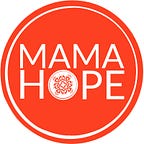Small Fish + Big Pond: Surviving to Thriving in Locally-Led Development
by Margot Hinchey — Head of Operations & Finance
While localization is the latest buzzword in the global development sector, the agendas set by major donors mean that funding for grassroots organizations remains limited. Global humanitarian assistance, from public and private donors, only increased slightly in 2021, with less than 1.2% of the funds going to grassroots organizations.
The majority of funding continues to be made available to organizations with annual budgets of $100,000 and above, leaving early-stage locally-led organizations with budgets under as little as $1,000 annually out in the cold. This is an imbalance that creates further barriers to communities and a strong need for impactful change. It is particularly pronounced in exclusively African locally-led organizations, which are less able to access funding, compared to their peers with a Western founder/co-founder.
What are the barriers that locally-led organizations face as they try to scale and grow their impact?
- Organizational Capacity: Oftentimes early-stage organizations, although they might be doing great work in their communities, lack the capacity that would allow them to be considered for funding. These organizations may also lack resources to hire local talent to support the implementation of their plans. Even established organizations struggle to navigate the complexities of grant applications from bilateral donors.
- Networks: In the development sector, it’s about who you know. Accessing resources hinges on your networks and who you are connected to. Can you make those connections, be in the right rooms, and get a seat at the table? Everyone is talking about localization, but still the resources are predominantly coming from rich countries. At the same time funders signify power, and not all are created equally. In organizations where funds are always tight, it can be harder to align to the right funders.
- Restricted Funding: Financial resources often come with strings attached. Strings may force organizations to pivot their strategic goals only to meet the requirements — pulling the organization away from their actual work and intended impact. It shifts the power away from the organizations and back to the funders, who end up calling the shots on what can and cannot be done for the communities.
This uphill battle begs the question: Who is bringing up and supporting early-stage organizations? If localization is to be truly implemented, then we need to start from the ground up: focusing on small organizations. It will allow them to find a footing, to be able to scale their models and to reach more people while using these already established organizations as mentors.
In response to the current challenges, and the growing demand for a more authentic model of localization, MAMA HOPE reviewed its 16-year community-led operating model in 2022. Our ambition now is to accelerate more early-stage locally-led organizations through our four (4) year Localization Development Accelerator (LDA) Program. This revamped model targets and addresses the need for strengthening the capacity of grassroots organizations to engage in the global development sector. The goal is to successfully scale locally designed and driven models.
Article Previously Published on the BNID blog.
